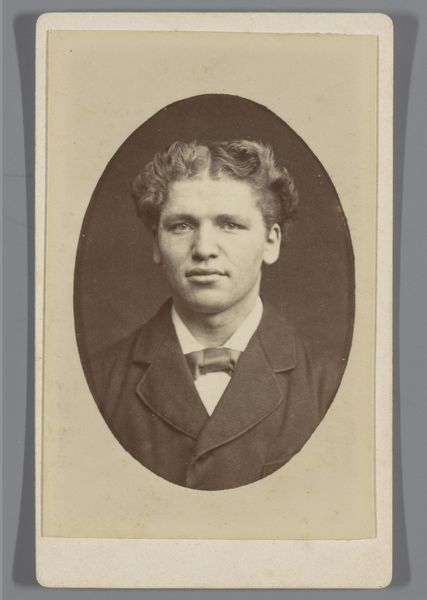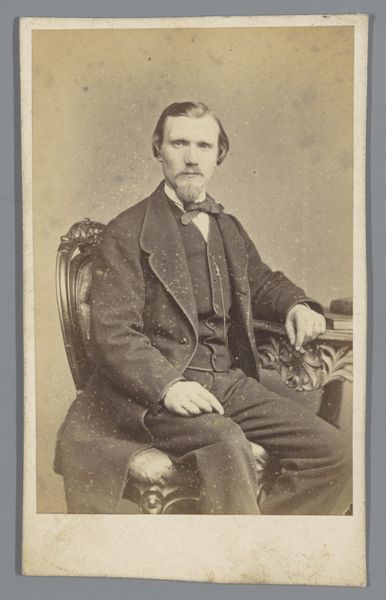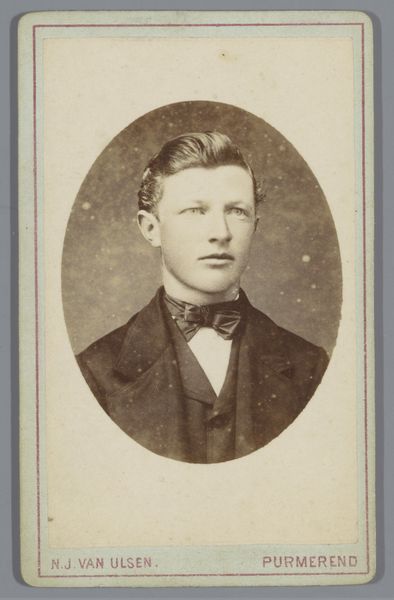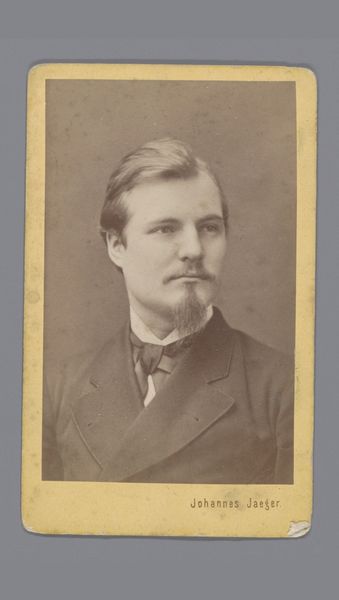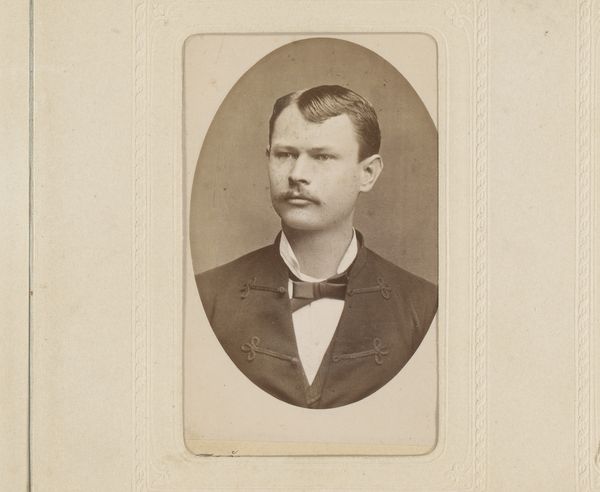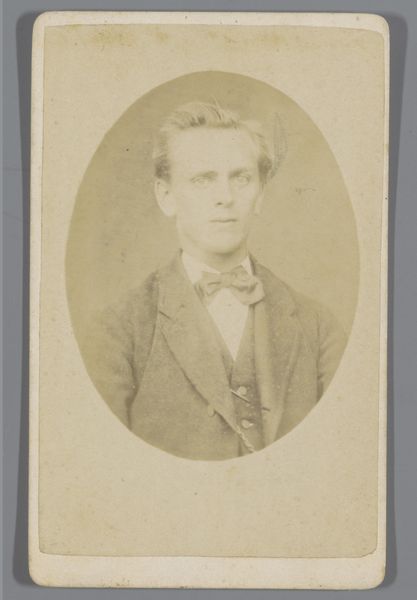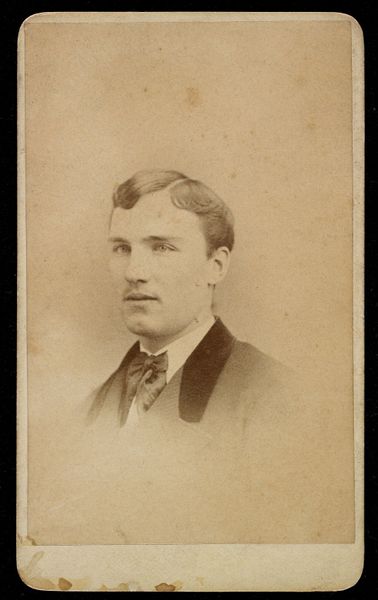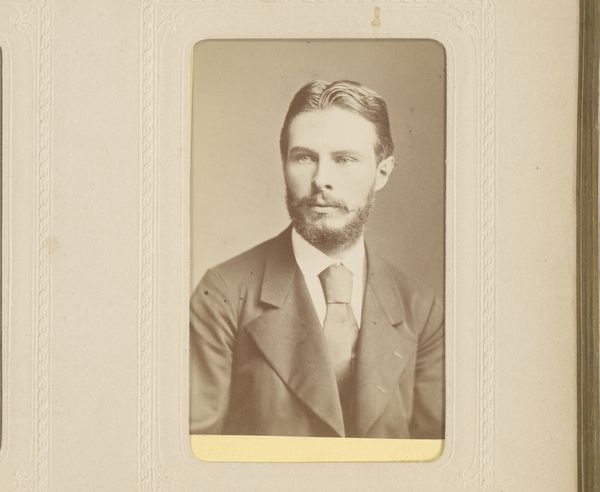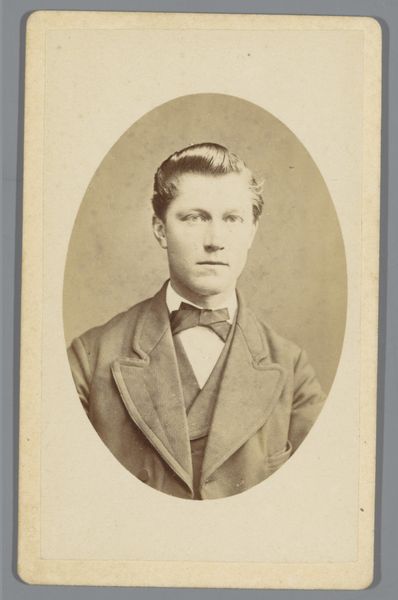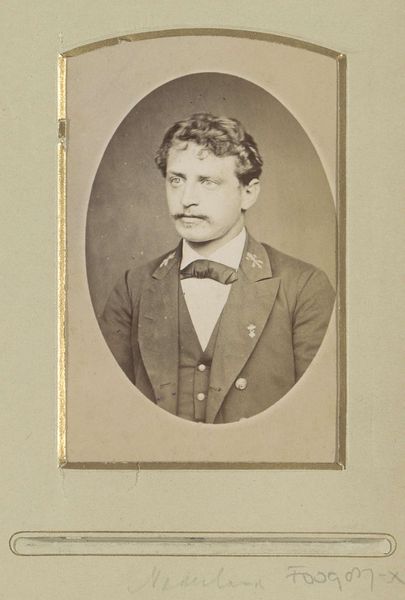
photography, albumen-print
#
portrait
#
aged paper
#
16_19th-century
#
yellowing background
#
photography
#
historical photography
#
19th century
#
albumen-print
#
realism
Dimensions: height 105 mm, width 63 mm
Copyright: Rijks Museum: Open Domain
This photographic portrait of an unknown young man was made by Frédéric Artigue using the 19th-century wet collodion process. In this procedure, a glass plate was coated with a light-sensitive chemical emulsion before being exposed in the camera. The plate then had to be developed immediately, while still wet. This was a highly skilled process, demanding speed and precision. Look closely, and you'll notice the image has a slightly soft focus and limited tonal range, characteristic of the wet collodion process. The sepia tone results from the chemical reactions involved in development, and the paper card was likely albumen print, which became a popular form of photographic printing. Think about the social context of this photograph. Wet collodion was a relatively accessible technology, allowing photography to move beyond the realm of wealthy elites. The rise of portrait studios democratized image-making, offering a way for ordinary people to document their lives and present themselves to the world. The photograph becomes a tangible object, reflecting both the sitter's identity and the photographer's skill in manipulating material and process.
Comments
No comments
Be the first to comment and join the conversation on the ultimate creative platform.
